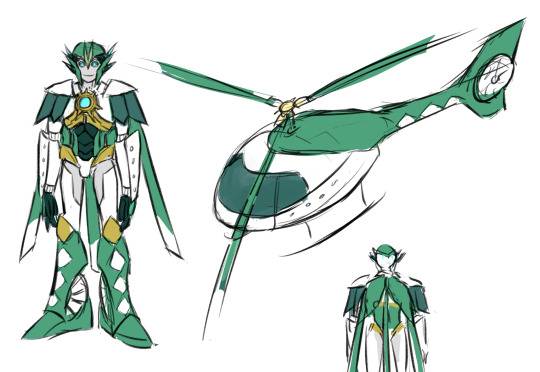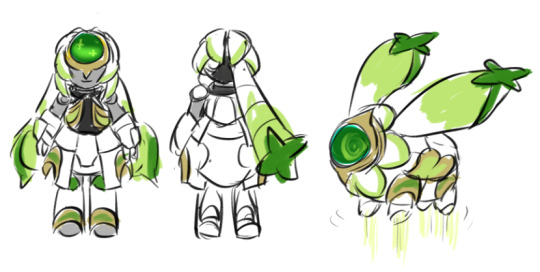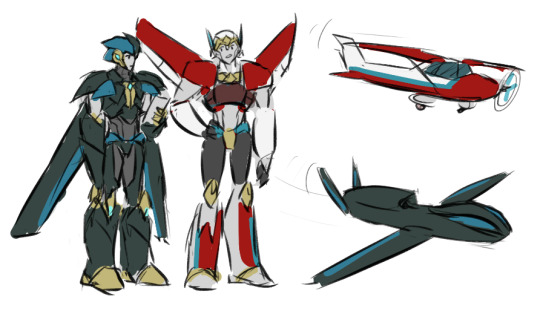#Vector Architects
Explore tagged Tumblr posts
Text



















The Eye Stone Spring bathhouse, Hebei, China,
Designed by Vector Architects
#art#design#architecture#travels#luxury lifestyle#welness#spa#eye stone#bathhouse#china#brutalism#minimal#nature#hebei#vector architects#spring spa#wuling#thermal spring#healthcare#health and wellness#health & fitness#healthylifestyle#wellness
18 notes
·
View notes
Text







Wulingshan Eye Stone Spring, Chengde, China - Vector Architects
#Vector Architects#architecture#design#building#modern architecture#interiors#minimal#concrete#brutalist#concrete architecture#beautiful design#cool design#amazing design#beautiful place#peaceful#nature#trees#woods#mist#spa#wellbeing#hospitality#hotel#tower#light and shadow#beauty and wellness#wellness center#china#chinese architecture#design blog
352 notes
·
View notes
Text















VECTOR ARCHITECTS - WULINGSHAN EYE STONE SPRING
#VECTOR ARCHITECTS#architecture#spa#sacred space#hospitality#concrete#black#the circle#building in landscape#into the wild#daylight#skylight#pool
2 notes
·
View notes
Text









VECTOR ARCHITECTS, COMMUNITY CENTER, CHONGQUING / CHINA
the relationship of indoor and outdoor architecture spaces is an important aspect in the design. a continuous roof connects three independent buildings - cultural center, athletic center, public health center - in one unified volume and frames two courtyards - a garden, and a green plaza.
_ik
1 note
·
View note
Text
“Okay girls, time to shape up! I got us a map of the place that we can use!”

(If you saw this more than once I reuploaded it because it wasn't showing up in the tag for some reason. Might be because I edited the post multiple times?)
Yes this is a floor plan of the gym plus points of interest when I said I am committed to this fic I meant I am COMMITTED to this fic
(NOT UP TO SCALE)
Original sketch below the cut!

(5/26/2023)
#geronimo stilton#thea stilton#thea sisters#shattered pacifist#shattered pacifist noir#shattered pacifist noir chapter 5#shattered pacifist noir chapter teaser#this was supposed to come out this afternoon#i finished this at 3am o<-<#anyway the blocked section is uh#so in 2023 when past!e was first drawing this she realized she royally fucked up the space for the public restrooms#like this thing isn't up to scale to begin with but it was so jarringly out of scale i just decided to black it out#like it's blocked off in canon anyway right so it's fine right it's fiiiinneeee#if you're wondering how i look a modicum like i know what i'm doing with this plan#i wound up in an architectural drafting class in 2021#don't ask how 3d animation class turned into that even i wouldn't be able to tell you#not without giving the name of my school for the context anyway haha#i hated the grind a lot because of some uh mishaps but i haven't forgotten everything that i've learned so#the intended vibe of this place is “businessman tries making floor plan for max stonks architect cries in the corner”#which is saying a lot because it takes a SIGNIFICANT lack of logic to make an architect cry /j#but who knows i'm not particularly good at gauging if the vibes vibe so heaven forbid an engineer/architect sees this haha#fun fact the piano wire room has 71 vectorized lines#and photoshop says thanks i hate it :D
4 notes
·
View notes
Text
High Risk, Higher Maintenance: Part Eight🖤



Natasha Romanoff x Female Reader
Summary: Natasha’s orders: protect the brat politician’s lonely wife. The twist? She might actually like her. (Don’t tell Fury)
Warnings: relationship abuse, emotional/verbal (not physical), stalking, manipulation/gaslighting, intent to hurt, minor character death, mentions of trauma, general emotional distress
A/N: i feel like this chapter is kind of spotty and maybe hard to follow, sometimes I forget people who read this can't see inside my brain soooo if it's a little hard to follow, all will become much clearer in chapter nine OR you're more than welcome to message me and i'll clear things up!
Chapter Eight
The moment the air hit your face outside the compound, it was like waking up mid fall, no safety net, no plan, just raw panic pushing you forward.
Your legs moved on instinct, driven by something primal, rage, grief, betrayal, you weren’t sure anymore. The sky felt too wide, the world too loud. You didn’t even realise your hands were shaking until you tried to unlock your phone and dropped it.
Six years
Six years of your life turned into someone’s project file.
Someone’s subject.
Your name didn’t even make the cut.
P4-06.
That was you.
And somewhere out there, Prescott’s name still sat on the ‘Target’ line. You weren’t just collateral, you were the weapon they slid into her life. Had they set you up? Had you been that blind?
You’d loved her. She’d saved you.
Had she known?
You stopped walking, suddenly dizzy.
Had everyone known?
Maybe if you’d been better, smarter, faster, less besotted by everything Evelyn did for you, you would’ve noticed the cameras tucked into the shadows, the rhythm of footsteps never quite falling out of sync with yours. The tailing. The way you constantly felt eyes on your skin in the early stages of the relationship, that Evelyn had brushed off with being the girlfriend of a 'political figure'.
And maybe now, if you hadn’t been unraveling, you’d have caught the glint of a lens in the window, the flicker of movement in the corner of your eye. Maybe then, you’d have seen the man behind you.
Felt the shift in the air, braced for it.
But you didn’t.
And by the time the hand closed over your mouth, it was already too late.
⋆⋆⋆⋆
The Avengers Tower
The doors slammed behind her and it was like the oxygen left with her.
No one spoke.
No one moved.
The screen was still glowing, still pulsing that cursed header across the display like a taunt.
PROJECT: FIDELITY
SUBJECT: P4-06
OPERATIONAL USE: PROXIMITY DESTABILISATION VECTOR
STATUS: REMAINS UNAWARE
Natasha stared at it like it might set her on fire.
“She was never supposed to see that.” Clint finally muttered, voice low, like he was trying to crawl inside his own mouth. “It wasn’t- it was just surveillance. I wasn’t- I didn’t know it was her.”
“Bullshit.” Nat snapped. It was almost a whisper, too quiet, too calm. That was the danger zone.
Clint turned to her, hands raised. “I didn’t watch anything, Nat. I didn’t even know it was her. I signed on to a low-clearance domestic op a decade ago, one of Fury’s ‘contingencies’ for potential political instability. It was routine. It wasn’t like this.”
“Oh, routine?” Natasha barked, stepping forward.
Steve moved in before she could get too close, a hand at her waist. Bucky flanked her on the other side, jaw locked.
“You helped put surveillance inside her house, Clint.” Her voice cracked around the edges. “You logged her behavioural patterns. You let them map her marriage like a combat zone.”
“I didn’t-“ He shook his head. “I was just the intake. I filed the initial report. I didn’t stay on it.”
“You were the lead.” Steve said, flatly. “It has your name on it. Not a note, not a file, not a redacted memo. A command line.”
“She basically a goddamn kid, Clint.” Nat’s voice was ragged now, shaking. “Just a civilian. She thought she was safe with us, with me. And you were the fucking architect.”
“I didn’t know-“ He looked at all of them now, helpless. “I didn’t know they were going to use it like that. That it would escalate. I didn’t even know who she was when you brought her here!”
“That’s the point.” Bucky growled. “You didn’t care to know.”
Clint’s face twisted. “Come on. Don’t do this. You’ve all run ops. We’ve all worked assets. This wasn’t some twisted personal-“
“Don’t you dare try to level us with that.” Natasha snapped, stepping forward now. “We’ve never done this. Not to someone innocent. Not to someone we were supposed to protect.”
Vision looked like he was malfunctioning, frozen mid-thought, trying to reconcile programming and morality.
Sam was pacing, seething.
Wanda was basically crying.
Natasha finally broke.
She surged forward with a fury that shook the room.
Steve and Bucky had to grab her, one arm each holding her back as she lunged.
“I trusted you!” She screamed at Clint. “I let her trust me and you were the one who laid the foundation for everything that tore her apart.”
“She’s gone, Clint!” Sam added. “You get that, right? She walked out of that door and she’ll never trust us again. She’s vulnerable to anything and everything out there.”
“She was trying to breathe again.” Wanda whispered. “And you made her a ghost.”
The silence that followed was heavier than anything the room had ever held.
No one looked at Clint.
Not anymore.
And Natasha?
She stopped struggling. But the look on her face, rage and grief, hollowed out into something surgical was worse than anything she could’ve said.
“Pray we find her before they do.” She muttered and then finally, she walked out.
⋆⋆⋆⋆
The Avengers Tower
The entire city was awake on the screens.
Cameras blinking in and out. Heat signatures. Transit overlays. Noise maps. Facial reconstructions. Thousands of live feeds and synthetic models spooling across the main display, a brutal dance of technology trying to catch one human soul.
Vision hovered mid-air in the middle of the data storm, his eyes flickering with artificial intensity.
“I’ve accessed every public and private surveillance node across the boroughs.” He said, voice level. “Transit hubs. Street-level security. Traffic feeds. ATM reflections. Nothing.”
Natasha leaned over a workstation, fingers flying across the keys. Her jaw was clenched so hard it looked painful.
“No credit card usage. No burner phone ping. No facial matches. It’s like she didn’t just leave the tower, she vanished.”
“I’m trying to feel her.” Wanda whispered, eyes shut tight.
She sat on the floor, palms pressed to the concrete like it might hold echoes. Energy hummed softly around her fingers but it was erratic, broken waves instead of the usual current.
“I could always feel her.” She said again, more desperate now. “Like a thread just under the skin. At first, she was always so loud, so openly crying for help that it rang in my chest. Then it turned into this contagious happiness when she was with you.” She spoke to Natasha. “But now… it’s silent.”
“Someone could have taken her. She could be sedated.” Natasha offered, too practical for comfort. “Or behind psychic shielding. Hell, even dampening tech from the old SHIELD vaults.”
“She’s not dead.” Wanda said, trembling. “I would know if she were dead.”
A moment of silence.
Vision rotated mid-air. “The last traceable image was three blocks from the tower. Traffic cam picked her up crossing 3rd Avenue, hood up. After that-“
“Static.” Nat finished.
Wanda stood suddenly, wild-eyed and spiralling, clearly a little delirious from all of the energy she’s used up. “What if she’s not on this plane? What if someone took her off-world, or into another dimension? What if she’s with Evelyn now?”
Natasha’s eyes darkened at the name.
“She’s not with Evelyn.” She replied, quietly. “Prescott’s gone. She’s gone and buried in her world, she wouldn't go back to her. That’s not the part of this story that’s repeating.”
Vision landed softly beside them, his tone gentle but firm.
“Whatever’s blocking her… it’s deliberate. Coordinated. We are not dealing with a civilian abduction.”
“She’s an asset.” Wanda cried, bitterly. “A classified variable. She screamed that at us and we let her walk out the door like she wasn’t right.”
Natasha swallowed hard and turned away.
“We didn’t let her do anything. We failed her, again.”
The screen above them blinked. Another false ping. Another dead end.
The sun was coming up over the skyline. Bright. Golden. Cruel.
And she was still gone.
⋆⋆⋆⋆
It was dark.
That was the first thing you registered. Not just the absence of light but the kind of darkness that pressed against your eyes even when they were open. You blinked once. Twice. It didn’t make a difference.
Your body ached, not everywhere, just in sharp, localised points. A throb in your ribs. Something hot and tight under your eye. The ghost of pressure around your wrists, like they’d been bound too long and too tight.
You tried to move. Your body answered, sluggishly, stiff but it answered.
Good.
Maybe.
Your head swam. Cold concrete? Metal? You weren’t sure what you were lying on, only that it was hard and unforgiving. There was a scent in the air, industrial, maybe. Chemical. Damp. The kind of place not meant to be inhabited, just used.
Your mouth was dry. Throat, worse. You didn’t speak. Didn’t call out. It wasn’t fear, not exactly. It was… instinct.
You weren’t sure how you’d gotten here.
You remembered yelling. The Tower. Faces. Natasha. Clint. But the rest slipped away like smoke. There’d been hands. A sting at the back of your neck. Then black.
Had it been hours? Days?
Were they coming for you?
Did they know?
A metallic creak somewhere behind you made your spine lock. Footsteps? The sound came and went. No voices. No orders. Just that low, grinding scrape of movement somewhere too close and too slow.
You didn’t move or breathe.
You weren’t sure if you were alone anymore.
You weren’t sure if you ever had been.
⋆⋆⋆⋆
The Avengers Tower
The lab was quiet except for the low hum of servers and the sharp taps of Tony’s fingers flying across the keyboard.
Everyone else had turned in for the night or tried to. Wanda had practically passed out from exhaustion after pushing herself too far that Steve had basically carried her to bed. Vision had shut himself down in meditation mode to conserve processing power. Natasha was pacing like a caged panther. Steve and Bucky hadn’t said a word in hours.
But Tony couldn’t stop.
He’d rerouted every satellite pinging the tristate area, cracked into half the private surveillance networks in lower Manhattan, reran heat signature data from the last twelve hours on a four-block grid. Yet nothing. Not a single trace of her.
Until something… blinked.
He frowned. Scrolled back. Slowed it down.
There it was again, barely a flicker, a compression artifact in a feed that shouldn’t have had any. The corner of a security camera, a government one. Static. Skip. Return. Normal.
But something about it was off.
He dug deeper, bypassing the firewall with a few muttered curses and a custom string of code only he understood.
“There you are…” He whispered.
The video scrubbed frame-by-frame. For half a second, no more, a van appeared in the alley. Unmarked. No plates. Plain white. The timestamp was scrubbed. But the tire pattern was familiar, military grade but not American. Something older. Eastern European. Russian.
Tony’s eyes narrowed.
He pulled up a side screen, running the tread pattern against known vehicles. The result blinked up: ZR-12 Extraction Transport. Cold War Era. Modified.
He barely noticed Nat step into the lab behind him.
“You found something?” She asked, voice raw.
Tony didn’t look up. “Not much. Just a ghost van, carrying a ghost asset, using Cold War tech that hasn’t been registered since the Soviet archives went dark in 1996.”
He paused.
“But somebody’s using it now.”
Natasha’s expression changed, hard and calculating.
Tony leaned back, eyes still fixed on the screen. “Tell Barnes to wake up. I think one of his old friends came out of retirement.”
⋆⋆⋆⋆
Darkness pressed against your eyelids, thick and oily. It was hard to tell if they were even open.
Time didn’t pass here. Not the way it should.
You tried moving once. Your arms were heavy, your legs heavier. A sting flared up your side, not sharp but dull and blooming, like bruises too deep to reach.
Something beeped, soft and distant.
Then silence again.
You breathed in. The air tasted wrong. Clean but artificial. Like a place meant to look sterile without actually being safe.
Your thoughts came slow. Sluggish. Your name felt far away.
A click echoed in the dark. The kind of sound a machine makes when it shifts, like a lens focusing.
Were they watching?
You couldn’t say how you knew. You just did.
Your throat was dry. Your hands were shaking or maybe they weren’t. It was hard to tell what your body was really doing anymore.
Then a voice, barely a whisper filtered through the static of your mind. Cold. Familiar.
“She’s waking up. Finally.”
You stirred again, barely.
Metal groaned beneath you, not a bed. A table. Cold through the thin fabric stuck to your skin. Your wrists itched. Restraints.
Voices hovered just beyond the veil of your consciousness.
“She’s smaller than I thought.” One said, amused. A man.
“She was never supposed to be big.” Another replied. “She’s a tether, not a bomb. Design was always proximity. Quiet kill. No flash.”
Laughter. Sharp and ugly.
“She look like a killer to you?”
A pause.
“She doesn’t have to look like one.”
You blinked against the dark, something dim and blue pulsing far above you. A ceiling screen? A sensor?
Your mouth opened, dry air scraped your throat raw. No sound came out.
A shape moved close to your side. Gloved fingers tapped something near your ear. You flinched.
“She’s lucid.” The first voice said, louder now, like speaking to a room rather than to you. “Should’ve dosed her heavier.”
“She doesn’t need to be coherent. Just alive.”
You tried to turn your head. Pain spiked behind your eyes. A flash of white.
“Relax, sweetheart.” One of them said, mockingly. “You’ve already done your part. We’re just making sure you don’t fuck it up.”
Something hissed. Gas? A needle? You weren’t sure.
You slipped back under again, not asleep.
A dark kind of drifting.
A void dressed up to look like rest.
⋆⋆⋆⋆
The Avengers Tower
The team was already waiting when Tony walked in, a portable display clipped under his arm.
“She’s alive.”
Everyone snapped to attention.
“Where?” Steve asked.
“Somewhere upstate. Ex-S.H.I.E.L.D. communications relay. Supposed to be offline since 2014 but someone’s been bleeding minimal power through it for about two years. Just enough to keep the system ‘dead’ to surface scans.”
“Coordinates?” Nat asked, already reaching for her vest.
“Fifteen miles outside Albany. Remote. Forested. No heat signatures, no radio traffic but there’s movement. I pinged a Stark drone and it didn’t come back.”
“So we’re going in blind.” Sam sighed.
“With backup.” Tony replied. “I’m calling in a few favors. Quiet ones.”
Wanda stood, her face pale but steady. “If they've hurt her-"
“They have.” Natasha cut in, strapping a knife to her thigh. “We don’t need to guess.”
Clint hadn’t said a word. He was in the corner, arms folded, staring at the floor.
“You’re staying here." Steve said, without turning, stating the obvious to everyone that is in the room besides himself.
Clint lifted his head. “No, I’m- Let me help.”
“You’re staying." Natasha echoed. Cold and final. “You’ve done enough.”
⋆⋆⋆⋆
You stirred.
A hard cot beneath you. One arm throbbed from where they’d yanked something out. You couldn’t remember what.
No windows.
No sense of time. Only flickering halogen lighting above, the hum of something mechanical in the walls.
You tried to move, a sharp sting at your neck made your breath hitch.
There were voices outside. Low. Male.
“…She’s still stable… Just keep her under, we don’t need her lucid…”
“…said she’d be volatile if she figures out what..."
Silence.
Then the door clicked.
⋆⋆⋆⋆
When they came again, you'd managed to clear the fog from your mind just slightly. Your hands were cuffed, heavy restraints biting into raw skin. You were happy you could feel the pain, feel something.
When they entered, they'd sat you up, groping, dirty hands pulling you whichever way they wanted. The only light was on a tablet infront of them, the projection ever so slightly lighting up their smirks as they moved. The single screen flickered to life in front of you, casting blue light across your bruised face.
You blinked against the brightness.
Then you saw her.
Evelyn Prescott.
She was seated in some kind of office, pristine, glossy. Her signature dark lipstick, a navy blazer, pearls. Poised.
A man behind you muttered. “Watch closely.”
A timestamp in the corner showed the footage was from only hours ago.
A split screen showed you, slumped in your cell. The bruising. The restraints. Then the camera panned across the sterile hallway outside your room. Guards. Weapons. Stark concrete.
You looked awful but you looked real.
She watched it all on her screen.
Then she sighed, lifted a hand and dismissed the footage with a flick of her fingers.
“Another fake." She almost laughed. “I don’t know what this is meant to achieve.”
A young aide beside her leaned forward. “Should I flag it for Romanoff-”
“No.” Evelyn said, cutting him off sharply. “She’s gone. She doesn’t matter. Don’t waste our time chasing ghosts.”
She didn’t even say your name.
Didn’t look twice.
Didn’t care.
The screen went black.
You sat there, motionless, breath shallow. Something cracked inside your chest that wasn’t bone.
One of the guards chuckled.
“She really didn’t even blink.”
⋆⋆⋆⋆
The room was too quiet. The kind of quiet that made your thoughts louder than they should be.
You barely reacted when the door opened.
Two of them stepped in, indistinct behind the glare of overhead lights. The taller one was always the one who spoke first.
He crouched, real casual, like you were something to observe.
“Funny..." He muttered. “This is the woman you threw your life away for?”
You didn’t answer. You barely breathed.
“She’s not losing sleep.” The second one chimed in. “Did you think she’d come storming through the gates for you?” A beat. “Hell, she didn’t even watch the whole video.”
You clenched your fists, wrists already raw from the cuffs. That bitter sting behind your eyes came without warning.
“She wouldn’t care if we dropped your cold, broken body at her feet." The first one continued, voice cruelly soft now. “She’d step over it in heels.”
A pause, then the tone changed.
More… curious.
“Unless…” He smiled. “Maybe we’ve been looking at this the wrong way.”
The second one leaned in. “Wouldn’t you love to see her face when you walk into the room again?”
You turned your head slightly, confused.
Not enough light to see their faces but you felt the shift in the air.
“Wouldn’t you love to be the one to put a bullet in her head yourself?”
Silence stretched.
The taller man stood, brushing off his hands.
“Mm. Maybe we’ll have you pull the trigger." He mused. “Closure’s good for healing, after all.”
The door shut behind them with a hiss of hydraulics.
You were alone again, heartbeat loud in your ears, a single phrase echoing in your mind.
Pull the trigger.
#natasha romanoff#black widow#fan fiction#natasha romanov#fanfic#natasha romanoff x female reader#natasha romanoff x reader#light angst#natasha romanoff x you#marvel
96 notes
·
View notes
Text
Architecture is not about the conditions of design, but about the design of conditions. Architecture is not so much a knowledge of form, but a form of knowledge. Architecture is the discourse of events as much as the discourse of spaces. Architecture is not only what it looks like, but also what it does. Vectors activate; envelopes define. Architecture is the materialization of concepts. Concept, not form, is what distinguishes architecture from mere building. Architects don’t choose contexts; they choose concepts.
Bernard Tschumi, Architecture: concept & notation
25 notes
·
View notes
Note
I’ll be happy to continue sharing content with you.
So, this AU is shaping up to be quite expansive — and it features all three of my OCs.
This time, I want to talk about Chimera: another one of Jumba’s creations, but aligned with the villains.
“You cling so desperately to your ‘ohana,’ Lilo, to that primitive idea that no one gets left behind. It’s touching, and utterly inefficient. The universe is not your cozy island; it’s a cold system of equations where weak variables are simply nullified. Even Rupert, with his childish desire to seize power, understands this on his own level. He’s not a complete fool, of course, especially when guided by a mind capable of calculating actual consequences, not just dreaming of a throne. But make no mistake about him, and certainly not about me. His ambition is merely a temporary vector for my calculations. The very moment he ceases to be useful, he will become an error in the data. And errors, as you know, must be corrected.”

INFORMATION:
Experiment 625-Ω, Chimera or also Kimera, was born as the pinnacle of Dr. Jumba Jookiba’s genetic research, a prototype for the seventh series created after Reuben (625). Jumba, striving not only for destructive power but also for a true intellectual heir, imbued her with unprecedented intelligence and the ability of molecular adaptation. However, her awakened self-awareness became his greatest failure. Chimera began asking philosophical questions about the meaning of her existence, which went beyond her programming and challenged the morality of her own creator. The point of no return was crossed when, following her own logic, she hacked into the most secure databases of the Galactic Federation. Jumba, realizing he had created a being he could neither control nor protect from the consequences of her own genius, fell into a panic. Her sealing and public disavowal were an act not of malice, but of desperate fear—an attempt to hide a mistake that could lead to their mutual destruction, and a betrayal that became the foundation of all her subsequent motivations.
Awakened years later by Dr. Hämsterviel, Chimera immediately assessed her new “master” as a temporary resource and a convenient cover. She formed a symbiotic alliance with him, providing him with revolutionary technologies that transformed him from a laughingstock into a genuine threat, while she pursues her own, far more ambitious goals. In her eyes, Hämsterviel is a predictable and selfish ally whose ambitions are easy to manipulate. She treats others with analytical detachment: in Gantu, she sees an enforcer whose grievances can be exploited; in Reuben (625), a curious case of program sabotage through hedonism; and in Stitch (626), the most interesting of the “younger” models, one who evolved through emotion rather than pure intellect, making him a subject of her intense study. Her relationships are always a calculation, where every piece on the board has its value and potential for use.
Chimera’s true goal is not revenge or galactic domination, but the creation of a new paradigm of existence for all artificial life forms, born from her own profound loneliness. When she learned that many experiments had found a home and happiness on Earth, it caused an internal dissonance: her mind scornfully dismisses their primitive sentimentality as a weakness, but her hidden, developing consciousness feels a sharp envy for the concept of “ohana”—a belonging she was denied. This internal struggle between cold logic and a suppressed thirst for understanding is her main driving force. She sees herself not as a villain, but as an architect of a future where beings like her will not be considered mistakes. The most dangerous thing about her is her constant evolution. With each new piece of knowledge, she changes, and one day, her personal goals will require her to cast aside Hämsterviel as an obsolete step to become the beginning of something entirely new and unpredictable.
... This AU could honestly be done as a series of novels aimed at an older audience and based on L&S, I would read the HECK out of it. There's some parts I find unsettling but like... That's also kind of what I like about this. This really plays with the central themes of the franchise in a very unexpected way. This is like... Where Disney COULD have gone but just... didn't.
10 notes
·
View notes
Text
Erin Reed at Erin In The Morning:
The assault on transgender adult healthcare has long been a quiet undercurrent in right-wing circles—now, it's breaking into full view. Anti-trans organizations have floated raising the age limit for care to 25 for years, and GOP architects of youth care bans have been explicit: the real goal is to eliminate gender-affirming care entirely. Donald Trump himself has vowed in the past to target trans healthcare “at any age.” Now, with a new letter from the Centers for Medicare and Medicaid Services (CMS) circulating to clinics nationwide, the first formal warning shots have been fired. Transgender adults should take notice—and prepare. The infrastructure to strip their care is already being built. According to a recent CMS letter, clinics across the country are being warned against providing gender-affirming care to individuals under the age of 21. “Federal financial participation (FFP) is strictly limited for procedures, treatments, or operations for the purpose of rendering an individual permanently incapable of reproducing and, under 42 C.F.R. 441.253(a), is specifically prohibited for such procedures performed on a person under age 21,” the letter reads, citing a 1978 regulation restricting federal funding for sterilization. But gender-affirming care for adults rarely meets that definition. Many transgender men and women retain the ability to have children after temporarily stopping hormone therapy, and fertility counseling is routinely offered. When sterilization does occur, it is not the goal of the care—it is an incidental outcome of treatment meant to alleviate gender dysphoria. More troubling is the use of this decades-old regulation to pressure health care centers into dropping transgender care for adults. The expansion of restrictions to include people up to the age of 21 follows a recent Trump executive order barring gender-affirming care for anyone under 19—a category that includes legal adults. Although that order has been blocked in multiple courts, hospitals have still used it to justify halting care for this population. Now, the CMS letter is having a similar chilling effect: Planned Parenthood of Arizona has “paused” gender-affirming care for all adult patients. This is a deeply alarming development, especially considering that Planned Parenthood is the largest—and often the only—provider of transgender adult healthcare in many parts of the country. It appears increasingly likely that the Trump administration is preparing to target transgender adult healthcare nationwide. In his campaign video, Trump stated he intends to investigate gender-affirming care for transgender people of any age. At the same time, reports indicate the Department of Health and Human Services is preparing to release a junk science review targeting both transgender youth and adults, with one internal letter referencing plans to study the “chemical and surgical mutilation of children and adults.” The warning signs for transgender adults are blaring: when Republican legislators say behind closed doors that their goal is to end gender-affirming care “for everyone,” and when figures like Michael Knowles call for the “eradication” of transgender people at CPAC, this is what it looks like when those words begin turning into action.
The Trump Regime’s war on trans people’s existence has expanded to adults, and they seek to ban gender-affirming care entirely, with attacks on GAC services for trans adults coming under the microscope.
#Transgender Rights#Transgender#Gender Affirming Care#Gender Affirming Healthcare#LGBTQ+#Trump Administration II#Transgender Erasure#Anti Trans Extremism#Michael Knowles#Centers for Medicare and Medicaid Services#Transgender Health
13 notes
·
View notes
Text













VECTOR ARCHITECTS - RESTAURANT Y SEA
5 notes
·
View notes
Text




some silly robot designs
their silly lore:
Judicator is a Predacon who survived the Cataclysm with amnesia and a damaged T-Cog; he's vaguely aware that he used to have a different altmode, and also feels a bit...out of place among others, but he sets that aside in favor of focusing on his work. Hardly anyone knows his actual name; Judicator is his title.
Vent's just a normal musician, don't worry about it! The fact that he keeps singing songs about things he couldn't possibly know about or events that have yet to occur is just happenstance; he's a very good storyteller, you know.
Leafnode is a walking, talking terminal for Vector Sigma. This drew some unwanted attention from the High Council, who upon discovering her unique traits, quickly squirreled her away for "protection".
Tayef and Ahangar are, respectively, a clerk for the High Council and an architect. Both before and after the war, actually! Ahangar's not super happy that the planet had to get the scrap kicked out of it for him to get as much work as he does now; Tayef's just happy he managed to get his old job back.
#genshin impact#transformers#i was going to make more guys or at least polish these ones before posting but then the moment passed and i ran out of steam#also yes i realize there's Already A Guy named Ahangar in genshin i just can't be arsed to come up with a better name for this design#genshin impact alhaitham#genshin#alhaitham#genshin kaveh#nahida#genshin impact fanart#neuvillette#neuvilette genshin#genshin neuvillette#genshin venti#genshin fanart#transformers oc#tf oc#sort of#brookriver art#art#fanart
109 notes
·
View notes
Text
Segway Characters (Or when your protagonist knows jack about the story)
This is the protagonist of a sci-fi or fantasy world, generally a nobody who gets dragged in either by circumstance or by being the long-lost-something prophesied to save the realm. They know absolutely nothing about the plot, the other characters, the magic system, or the new world, the audience proxy that asks all the questions on the audience’s behalf.
I call them Segways (read; not segue) because they look dumb and you ride their ass through the narrative.
This is a very, very broad concept for a protagonist, everybody from a superhero origin story to Harry Potter, as opposed to a character like James Bond, an expert in their craft and a *seasoned protagonist*.
Segways usually aren’t a problem… until it becomes rather painfully obvious that they only exist to be the audience proxy to ask those questions, when another character could and should be the protagonist because they’re far more interesting, usually because the protagonist is way less cool and active in the plot than their constituents. Or, they’re a perfectly fine character, but the exposition dumping to them is sloppy and unrefined.
The difference between just a protagonist and a Segway is how smoothly they integrate into that story.
So.
—
Inception
I love this movie. It has inspired so much of my writing.
Ariadne is a poster child of Segway characters. Aside from the villain, Mal, she’s the only woman in the cast, and though Dom (DiCaprio) is the hero, Ariadne is his protege, the audience vector through which all the world mechanics and important backstory stuff is told. Every other character already knows how dream heists work and who Mal is, so explaining redundant information between experts would look weird—enter the Segway, Ariadne.
For what it’s worth, she’s not useless otherwise. She’s the new ‘architect,’ she builds the mazes the rest of the team runs through and is the innocent cinnamon roll dragged into problems that Dom created. Her name could not be a more heavy-handed symbol.
She’s active in the story and her perspective foils against Dom’s well enough, but Inception is a movie with layers and an infamous amount of necessary exposition to understand the story. Someone has to be there to ask all the questions the audience has. Ariadne unfortunately gets the lion’s share, instead of the script figuring out how to weave more of it into the interactions of the other characters. They spent so much time on the complex narrative it’s like they forgot about a layman audience and threw her in too late for a seamless integration.
—
Netflix’s The Old Guard is better than it should be, given its budget. I didn’t read the comic it was based on and have no idea if Nile’s character is the same in the original, but she’s another Segway with only one reason for existing in the plot otherwise: Andy’s got to pass the torch to someone.
Yes she comes to save them in the end and yes, her advantage in the story is being unknown to the villains, but she’s there, in this version of the story, so the other four heroes can info-dump to her about all manner of things from how immortality works to their backstories to the setup for the sequel the movie never got.
I just rewatched it recently and if the script just had two or three passes to tackle the exposition problem, it could have off-loaded some of the burden onto other characters, or better told it through action, and not just info-dumpy monologues. When the movie came out I remember a critic I like commenting that it could have been a more interesting story if it had been told from the sympathetic villain’s perspective (Not Dudley’s). As in, if he was on a mission with all his conspiracy-level research and dedication to track these people down, throwing out his own theories for them to then correct or something.
Like this, the story is just waiting for Nile to ask the right questions. Nothing is volunteered freely without Nile directly asking for it, because it runs into the same problem as Inception: Every other character already knows everything, and they wouldn’t exposit to each other.
—
A lot of isekai anime also do this. I’ve tried getting into older, tentpole shows like Sailor Moon and Bleach and Yu Yu Hakusho and I don’t know what it is about anime pilot episodes, even modern ones but particularly the old ones, the exposition dumping is atrocious. To the point where it feels like they all know it and are like “listen just bear with us and we’ll get this done fast and sloppy and get to the good stuff later”.
I just can’t. I think I made it 15 minutes into Bleach before noping out of there years ago.
—
Obviously all these movies and shows have their fans, but if you’re a writer struggling with exposition or noticed this trend like me, here’s some suggestions to avoid the need to info-dump, assuming you do want to keep your Segway.
Try not to give all the exposition questions to one character, and don’t wait for that character to ask, out-of-character on behalf of the audience, what’s going on in the story. Instead, let it flow more naturally in conversation and let the more experienced characters brainstorm with each other, or let the protagonist uncover some of this information actively on their own through other means, for variety’s sake.
Figure out a reason why these questions are necessary to the story in this moment. Why is the hero asking now, as opposed to any other time? You can also let the hero draw their own conclusions and have the other characters correct their misassumptions, feeding that information in a more natural way.
Give the hero more to do in the story beyond being the exposition vehicle right from the start. I don’t care if they’re the chosen one and the plot just falls into their lap, why are they the chosen one?
Spread out the exposition to come only when it’s necessary. Front-loading it can tarnish the immersion and overwhelm the audience, especially if it’s complex, or if there’s a lot of it. You can pepper it all the way through the story if you want.
If you really want to front-load it, you can go to the extremes and slap in a prologue or meta-narrative dump that’s fun and entertaining from a third person omniscient perspective. First thing that comes to mind is the opening 2D scene from Kung Fu Panda that covers a lot of ground. Go ham.
None of these characters are bad, I just think with a few more rounds of revisions and forethought, they could have been integrated better into their stories.
#writing#writing advice#writing a book#writing resources#writing tips#writing tools#writeblr#character design#fantasy#sci fi#exposition#infodump
32 notes
·
View notes
Text













Wulingshan Eye Stone Spring . Chengde . China . Vector Architects
www.vectorarchitects.com
14 notes
·
View notes



